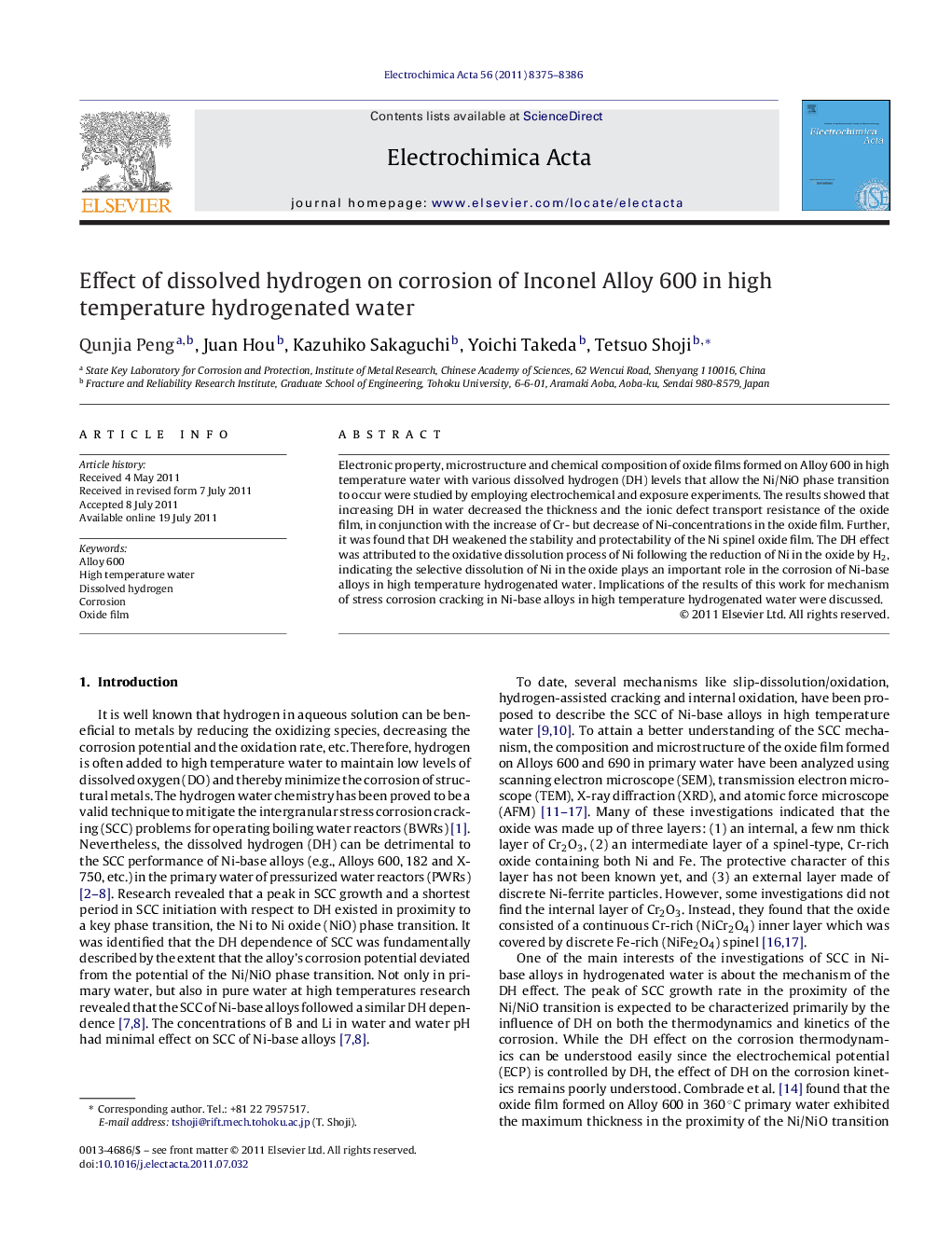| Article ID | Journal | Published Year | Pages | File Type |
|---|---|---|---|---|
| 189211 | Electrochimica Acta | 2011 | 12 Pages |
Electronic property, microstructure and chemical composition of oxide films formed on Alloy 600 in high temperature water with various dissolved hydrogen (DH) levels that allow the Ni/NiO phase transition to occur were studied by employing electrochemical and exposure experiments. The results showed that increasing DH in water decreased the thickness and the ionic defect transport resistance of the oxide film, in conjunction with the increase of Cr- but decrease of Ni-concentrations in the oxide film. Further, it was found that DH weakened the stability and protectability of the Ni spinel oxide film. The DH effect was attributed to the oxidative dissolution process of Ni following the reduction of Ni in the oxide by H2, indicating the selective dissolution of Ni in the oxide plays an important role in the corrosion of Ni-base alloys in high temperature hydrogenated water. Implications of the results of this work for mechanism of stress corrosion cracking in Ni-base alloys in high temperature hydrogenated water were discussed.
